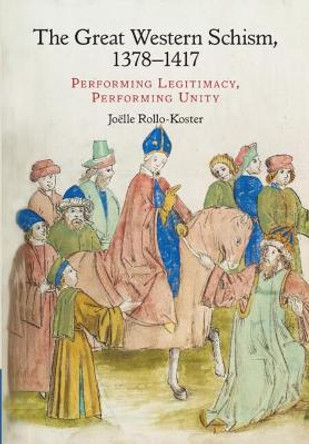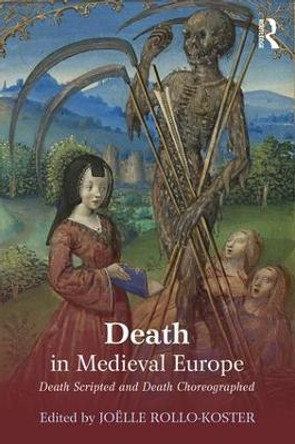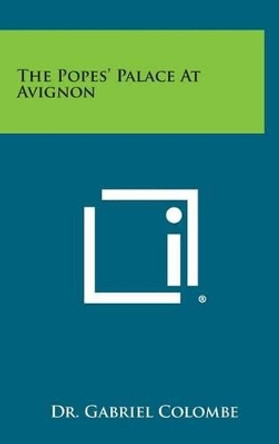Description
About the Author
Joe lle Rollo-Koster is professor of medieval history at the University of Rhode Island and author of Raiding Saint Peter: Empty Sees, Violence, and the Initiation of the Great Western Schism and The People of Curial Avignon: A Critical Edition of the Liber Divisionis and the Matriculae of Notre Dame la Majour. She has been named a Chevalier of the Ordre des Palmes Academiques in recognition of her outstanding academic research in French history.
Reviews
Joelle Rollo-Koster, an eminent specialist of medieval Avignon and its papacy, has successfully managed to compress the history of the seven Avignon popes in their complex political and religious environment into just over three hundred pages. One of the stars of this study is the city of Avignon itself, which Rollo-Koster brings to vibrant life, especially in chapter five, based almost entirely on her own archival research. After a very useful overview of previous scholarship, the first three chapters offer a chronological account of the three phases of the Avignon papacy, each section highlighting particular controversies. . . . [A]n impressive achievement, a lively and accessible study that will undoubtedly become the standard work on the Avignon papacy. * Church History: Studies in Christianity and Culture *
A fresh, accessible, single-volume overview is long overdue. Joelle Rollo-Koster has provided just that.... She has written a lively, engaging, thorough, and richly-researched history of the Avignon papacy for the twenty-first century. Avignon and Its Papacy will be of particular use to students looking for a concise, readable guide to the fourteenth-century papacy. * The Medieval Review *
[Joelle Rollo-Koster's] book fills a gap in providing an English narrative of the 'illegitimate' popes in Provence from 1378 until 1417, as well as bringing some new perspectives on the 'legitimate' Avignon papacy to 1378. Written in an accessible style, Avignon and Its Papacy will likely become the standard introduction to the subject for twenty-first century students. * H-France Review *
History is such a wonderful tool for relativizing the present and norming the future. Rollo-Koster provides us with such a tool for understanding the functions of the papacy. . . .The Great Western Schism (1378-1417) ended the Avignon papacy through the Ecumenical Council of Constance (1414-1418). The power of the Emperor was needed to sustain the power of the pope; the power of an ecumenical council provided the Catholic Church with a pope-who, with time, became the absolute monarch reflected in today's papacy. Rollo-Koster provides us with the details of the role of the Avignon popes in all this. We find out how much it cost, for example, to make the red slippers worn by the pope, how many days it took for the head of France to enter into the city, why people were hung in one place and whipped in another, and why the various attempts to return to Rome failed. When you finish reading this book you will have an excellent tool for understanding the papacy of yesterday and today. * Catholic Books Review *
The goal of Rollo-Koster's book is to rehabilitate for an English-speaking audience the awful reputation that the Avignon papacy has held from Petrarch to the present. In particular, she aims to demonstrate the effectiveness of the papal government and to recover the creativity and civic dynamism of the period. . . .The book...update[s] the classic surveys of Guillaume Mollat and Yves Renouard. * Renaissance Quarterly *
In this survey of the Avignon papacy and the period of the Great Western Schism (1378-1417), Rollo-Koster sets out to 'rehabilitate' the Avignon papacy from a reputation that began as early as Petrarch's criticism of Avignon as 'the Babylon of the West.' Although the author acknowledges the Avignon popes' emphasis on 'efficient productivity' rather than spirituality, she shows that their institutional achievements, including an effective bureaucracy, a centralized fiscal system, and the development of archives and recording procedures, were innovative and provided long-term stability. She credits much of this to Pope John XXII (r. 1316-1334), 'an administrative genius' and the 'architect of papal centralization' who established the foundations on which his successors built. Rollo-Koster further challenges the view that the Avignon papacy turned its back on Rome; rather, it recognized the temporary status of its residence and sought to return to Rome, even as it transformed the village of Avignon into a cosmopolitan city and a spiritual capital. Employing her familiarity with Avignon's archives and the streets of the city, Rollo-Koster provides English readers with a valuable introduction to a dynamic, if controversial, period in papal history. Summing Up: Highly recommended. All levels/libraries. * CHOICE *
Joelle Rollo-Koster's book is a welcome, synthetic addition to an otherwise eclectic sum of academic studies on medieval papacy. It is, foremost, an elegant and readable study for readers in want of a refreshed account on the fourteenth-century papacy during its controversial sojourn in Provence. Owing to her seasoned experience with both archival sources and the rich body of literature on the subject, Rollo-Koster offers a much-needed comprehensive approach to a complex topic. She also provides an astute cultural understanding of the popes' presence and actions in Avignon, which they transformed from a traditional village into a thriving quasi-modern, multicultural society. -- Francine Michaud, University of Calgary
This is a definitive, multifaceted portrayal focused on the years when the papacy resided in Avignon rather than Rome. Drawing on her long immersion in the archives and sites of Avignon, Joelle Rollo-Koster has written an engaging saga of the seven Avignon popes, setting their personal traits and political careers within the wider history of the medieval papacy. Rollo-Koster's lucid analysis of their fiscal and administrative practices makes a persuasive case that the Avignon period created the stable and centralized base on which the papacy thrived for centuries. -- Kathleen Ashley, University of Southern Maine
This revisionist work offers a new look at the Avignon papacy and individual popes in the context of the papal city. Joelle Rollo-Koster draws on her deep acquaintance with the documents of medieval Avignon to recreate the vibrant urban scene within which the papal machinery operated. An insightful and nuanced history of the papacy, its entourage, and the people of medieval Avignon. -- Kathryn Reyerson, University of Minnesota
Book Information
ISBN 9781442215320
Author Joelle Rollo-Koster
Format Hardback
Page Count 328
Imprint Rowman & Littlefield
Publisher Rowman & Littlefield
Weight(grams) 572g
Dimensions(mm) 236mm * 161mm * 24mm






